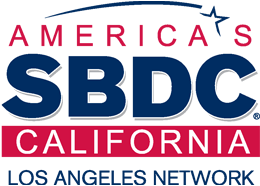When small business owners first start thinking about their website, they inevitably want to focus on how the site is going to look. That’s understandable. Humans are a visual species. And deciding which shade of teal to use is much more fun than writing up detailed descriptions of various products. The problem?
Content is the only reason people are visiting your website.
That’s not to say design isn’t important. A professional looking website plays a big role in a small business’ perceived credibility. But the most beautifully designed website is useless without good information about the business and the products or services it offers. In fact, according to various studies, more than 50% of visitors leave a website without engaging because they couldn’t find the content they were looking for.
There is another reason to provide lots of relevant content about your business on your website: Google. Google and its search-engine brethren use the content on a web page to determine when and where to show that page in their search results. No content on your website, no showing up in Google’s search results. And since more than 70 percent of U.S. households use the Internet to research their purchases even when shopping locally, not showing up in search engines can be devastating to a small business’ bottom line.
Thinking about your website content can even help you make better choices in developing your business model. If you can’t explain your primary product’s main selling points in a few sentences, that’s a sign you need to clarify your message.
So why do most small business owners treat the content of their website as an afterthought?
Much of the answer can be attributed to the typical web development process. It is a tried-and-true trope among web developers that the biggest hurdle to launching a small business website is “waiting on content”. As a result, web developers and designers often make a site with some cut-to-fit Lorem Ipsum filler text, which might look nice, but doesn’t reflect the real-world priorities of the individual business.
Build-your-own-website services can be even less focused on content, providing flashy templates and stock photography that are heavy on the design and light on the details.
The problem is, information about a business–its history, its goals, its products and services–can only come from the business itself. And while web developers and DIY platforms assume otherwise, most small business owners simply don’t know what to say: They don’t know what sort of content their site needs, or how to start creating it.
Enter the Website Content Worksheet. This worksheet provides a starting point for the small business owner to develop their initial website content. It is not meant to be exhaustive or map out a complex website. It is designed as a series of prompts to get the small business owner to start articulating what they already know about their business or product, but may need help freeing from the confines of their brain.
Because whether you are building your own site or working with a developer, the most important thing when it comes to writing your website content, is to start.
Website Content Worksheet
The goal of this worksheet is to help small business owners draft starting content for their website in order to effectively communicate their business’ message to their customers and the general public. Each section focuses on creating text for the corresponding page of a simple small business website: Home, About, Products/Services, Blog, and Contact.

Written By: Sé Reed, SBDC Consultant
Sé Reed is a specialty business consultant at the Small Business Development Center hosted by Long Beach City College where she helps small business owners develop effective web and marketing strategies, including web development, social media, e-commerce, and search engine optimization through one-on-one consulting and monthly workshops. Follow her on Twitter @sereedmedia.






